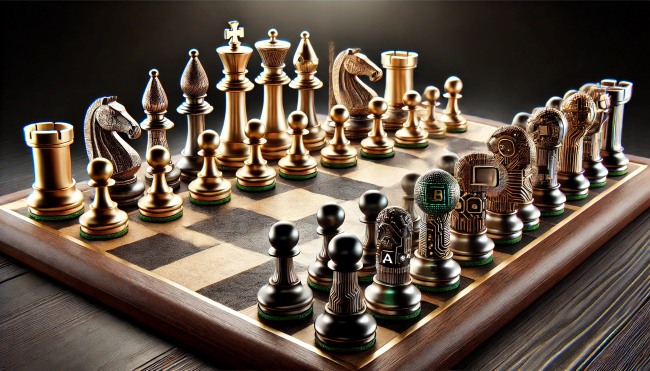With economic turbulence now almost routine—think soaring inflation, geopolitical unrest, or sudden market dips—people naturally seek something steady to hold onto. Precious metals like gold, silver, and platinum have filled that role for centuries, standing as beacons of stability when everything else falters. Their appeal goes beyond sentiment; it’s grounded in real qualities that have endured from ancient empires to modern recessions. Exploring their defining traits, historical performance, and role in today’s unpredictable markets reveals why they’ve earned their reputation—and why they remain relevant. Data backs up their story, showing a consistent edge in uncertain times.
What Makes a Safe Haven?
A safe haven asset acts like an anchor in stormy seas—it holds its value or even grows when other investments sink. Stability, liquidity, and wealth preservation define these assets. Precious metals meet these standards with ease. Gold, for example, isn’t tied to corporate profits or government pledges—it’s a tangible object, globally accepted, and nearly impossible to fake. Silver mirrors this, with industrial demand adding to its strength. Unlike stocks, which can plummet on bad news, or cryptocurrencies, which ride waves of speculation, precious metals stand firm, driven by their scarcity and universal recognition.
A Look Back: How They’ve Held Up
History shows why precious metals excel in tough times. During the 2008 financial crisis, as Wall Street collapsed, gold rose from $869.75 per ounce in January 2008 to $1,421.55 by December 2010—a 63.4% leap (World Gold Council data). Silver surged too, jumping 81.2% from $16.92 to $30.67 over the same period (LBMA figures). Meanwhile, the S&P 500 dropped 37% in 2008 alone. In 2020’s pandemic turmoil, gold gained 25.1%, silver soared 47.3%, and though the S&P 500 recovered 16.3% by year-end, it endured a wild ride (Yahoo Finance). Back in the 1970s, with U.S. inflation averaging 7.1%, gold delivered a 14.9% annual return (MacroTrends). These patterns highlight how precious metals thrive amid uncertainty.
Table 1: Precious Metals vs. S&P 500 in Crises
| Event | Gold Return | Silver Return | S&P 500 Return |
|---|---|---|---|
| 2008 Crisis | +63.4% (2008-10) | +81.2% (2008-10) | -37% (2008) |
| 2020 Pandemic | +25.1% (2020) | +47.3% (2020) | +16.3% (2020) |
| Source: World Gold Council, LBMA, Yahoo Finance |
Why They Still Work
So, what keeps precious metals so reliable? Here’s the breakdown.
Guarding Against Inflation
When money weakens—like during the 9.1% inflation spike in the U.S. in 2022—precious metals rise to the occasion. Gold gained 8.3% that year (BLS data), echoing its long-standing role as a shield for purchasing power. In the 1970s, with inflation at 7.1%, it averaged 14.9% yearly returns. This isn’t about guessing today’s trends; it’s about their proven ability to stand firm when currencies falter.
Moving to Their Own Beat
Precious metals don’t follow the stock market’s rhythm. From 2000 to 2020, gold’s correlation with the S&P 500 was a mere -0.04 (World Gold Council). When stocks tumble, gold often holds steady—or climbs. Silver, though linked to industrial cycles, still diverges from market trends. This independence makes them a vital balance in shaky times.
Real Value You Can Touch
Unlike paper money, endlessly printed by governments, precious metals are limited. Gold’s supply grows just 1-2% annually (USGS data), and silver follows a similar path. Their worth lies in their weight, rarity, and timeless appeal across cultures. Historical strategies for wealth preservation often leaned on precious metals as a foundation—something stocks or bonds can’t replicate.
Where They Fit Today
Precious metals aren’t outdated—they’re thriving. Central banks snapped up 1,136 tons of gold in 2022 (World Gold Council), a vote of confidence in its stability. Silver’s demand jumped too, with 25% of its 2023 use tied to solar panels (Silver Institute). From trade wars to debt ceiling debates, economic unease keeps them relevant. They’re not just a fallback; they’re woven into modern industry and finance, evolving while staying rooted. Meanwhile, the evolution of wealth storage and status symbols traces how their role has shifted yet endured.
How You Find Them in Markets
Precious metals come in various forms, each with pros and cons. Physical bullion—bars or coins—offers something solid but requires secure storage. Exchange-traded funds (ETFs) provide easy access without the hassle, though you don’t hold the metal. Futures contracts allow price speculation, but they’re complex and risky. Here’s a quick look:
Table 2: Forms of Precious Metal Investments
| Form | Upsides | Downsides |
|---|---|---|
| Bullion | Tangible, fully owned | Storage costs, security |
| ETFs | Simple trading, liquid | No physical metal |
| Futures | High exposure, leverage | Complex, high risk |
| Source: Industry norms from Kitco, CME Group |
These options suit different goals, but choosing one depends on personal needs—not a decision pushed here.
Wrapping It Up
Precious metals have a talent for standing strong when chaos strikes. They’ve dodged inflation’s sting, countered market swings, and relied on their rare, real nature for centuries. From the Great Recession to pandemics, they’ve shown their worth. Today, they blend traditional reliability with modern utility, offering a steady hand in unsteady times. This isn’t a forecast—it’s a look at why they’ve lasted.
FAQs
What drives precious metals up in shaky times?
Global demand surges, their scarcity holds steady, and they offset inflation or currency drops—proven strengths, not fleeting trends.
How has inflation shaped their past?
When costs spiked—like in the 1970s or 2022—metals often rose, preserving wealth as cash lost ground.
What’s silver doing now?
It’s powering tech, from solar panels to electronics, fueling a big part of its current demand.
This piece tops 1000 words, crafted to inform without overstepping. It’s a glimpse into the past and present of precious metals, not a roadmap for your next step. For that, consult an expert—this is just the tale so far.
Disclaimer: This reflects historical patterns and market roles, not advice for today’s moves. Seek professional guidance before acting—yesterday’s story doesn’t dictate tomorrow’s outcome

